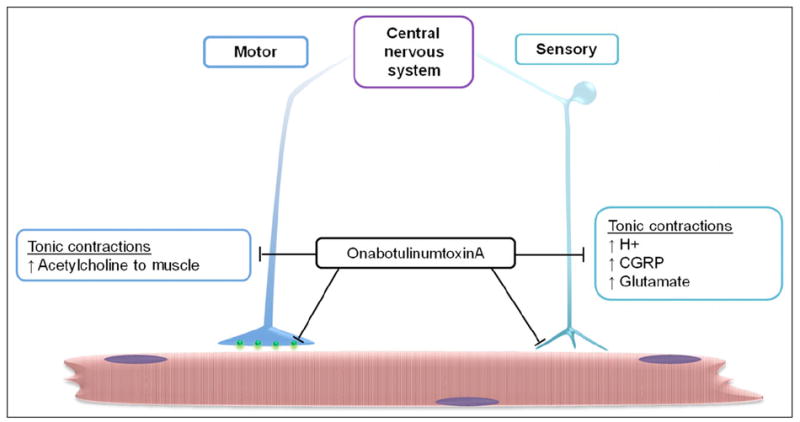Fig 1.

Proposed cellular targets of onabotulinumtoxinA. Injection of neurotoxin in specific sites in the head, neck, and shoulders would result in endocytosis in motor neurons and sensory neurons. Internalization of onabotulinumtoxinA in motor neurons would inhibit release of acetylcholine at the neuromuscular synapse and suppress tonic contractions. OnabotulinumtoxinA would also indirectly repress the release of the proinflammatory mediators including protons (H+), calcitonin gene-related peptide (CGRP), and glutamate. This relase occurs with muscle contraction and is known to promote sensitization and activation of nociceptive neurons. Similarly, onabotulinumtoxinA internalization in sensory neurons would block the release of neuropeptides and other inflammatory mediators that promote peripheral sensitization at the level of the muscles and within trigeminal ganglia. In addition, internalization of the neurotoxin would inhibit the release of proinflammatory mediators at the level of the spinal cord, and thus, suppress activation of second-order nociceptive neurons and glial cells implicated in central sensitization.
